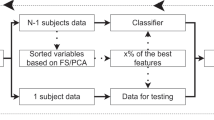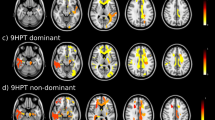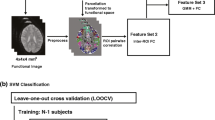Abstract
The Expanded Disability Status Scale (EDSS) is the most widely used scale to evaluate the degree of neurological impairment in multiple sclerosis (MS). In this paper, we report on the evaluation of an EDSS modeling strategy based on recurrence quantification analysis (RQA) of posturographic data (i.e., center of pressure, COP). A total of 133 volunteers with EDSS ranging from 0 to 4.5 participated in this study, with eyes closed. After selection of time delay (τ), embedding dimension (m) as well as threshold (radius, r) to identify recurrent points, several RQA measures were calculated for each COP’s position and velocity data in the mono- and multi-dimensional RQAs. Estimation results lead to the selection of the recurrence rate (RR) of the COP’s position as the most pertinent RQA measure. The performance of the models versus raw and noisy data was higher in the mono-dimensional analysis than in the multi-dimensional. This study suggests that the posturographic signal’s mono-dimensional RQA is a more pertinent method to quantify disability in MS than the multi-dimensional RQA.





Similar content being viewed by others
References
Berer K, Krishnamoorthy G (2014) Microbial view of central nervous system autoimmunity. FEBS Lett 588:4207–4213
Cao H, Peyrodie L, Boudet S, Cavillon F, Agnani O, Hautecoeur P, Donzé C (2013) Expanded disability status scale (EDSS) estimation in multiple sclerosis from posturographic data. Gait Posture 37:242–245
Casdagli M, Eubank S, Farmer JD, Gibson J (1991) State space reconstruction in the presence of noise. Phys D 51:52–98
Di Marco LY, Di Maria C, Tong WC, Taggart MJ, Robson SC, Langley P (2014) Recurring patterns in stationary intervals of abdominal uterine electromyograms during gestation. Med Biol Eng Comput 52:707–716
Frzovic D, Morris ME, Vowels L (2000) Clinical tests of standing balance: performance of persons with multiple sclerosis. Arch Phys Med Rehabil 81:215–221
Gaspari M, Roveda G, Scandellari C, Stecchi S (2002) An expert system for the evaluation of EDSS in multiple sclerosis. Artif Intell Med 25:187–210
Hasson CJ, Van Emmerik RE, Caldwell GE, Haddad JM, Gagnon JL, Hamill J (2008) Influence of embedding parameters and noise in center of pressure recurrence quantification analysis. Gait Posture 27:416–422
Huisinga JM, Yentes JM, Filipi ML, Stergiou N (2012) Postural control strategy during standing is altered in patients with multiple sclerosis. Neurosci Lett 524:124–128
Karst GM, Venema DM, Roehrs TG, Tyler AE (2005) Center of pressure measures during standing tasks in minimally impaired persons with multiple sclerosis. J Neurol Phys Ther 29:170–180
Kennel MB, Brown R, Abarbanel HD (1992) Determining embedding dimension for phase-space reconstruction using a geometrical construction. Phys Rev A 45:3403–3411
Kurtzke JF (1983) Rating neurologic impairment in multiple sclerosis: an expanded disability status scale (EDSS). Neurology 33:1444–1452
Ladislao L, Fioretti S (2007) Nonlinear analysis of posturographic data. Med Biol Eng Comput 45:679–688
Marwan N, Carmenromano M, Thiel M, Kurths J (2007) Recurrence plots for the analysis of complex systems. Phys Rep 438:237–329
Negahban H, Salavati M, Mazaheri M, Sanjari MA, Hadian MR, Parnianpour M (2010) Non-linear dynamical features of center of pressure extracted by recurrence quantification analysis in people with unilateral anterior cruciate ligament injury. Gait Posture 31:450–455
Packard NH, Crutchfield JP, Farmer JD, Shaw RS (1980) Geometry from a time series. Phys Rev Lett 45:712–716
Palmieri RM, Ingersoll CD, Stone MB, Krause BA (2002) Center-of-pressure parameters used in the assessment of postural control. J Sport Rehabil 11:51–66
Pavol MJ (2005) Detecting and understanding differences in postural sway. Focus on “a new interpretation of spontaneous sway measures based on a simple model of human postural control”. J Neurophysiol 93:20–21
Peyrodie L, Boudet S, Pinti A, Cavillon F, Agnani O, Gallois P (2010) Relations entre posturologie et score EDSS. Sci et Technol pour le Handicap 4:55–71
Polman CH, Reingold SC, Edan G, Filippi M, Hartung HP, Kappos L et al (2005) Diagnostic criteria for multiple sclerosis: 2005 revisions to the “MacDonald Criteria”. Ann Neurol 58:840–846
Porosinska A, Pierzchala K, Mentel M, Karpe J (2010) Evaluation of postural balance control in patients with multiple sclerosis—effect of different sensory conditions and arithmetic task execution. A pilot study. Neurol Neurochir Pol 44:35–42
Ramdani S, Tallon G, Bernard PL, Blain H (2013) Recurrence quantification analysis of human postural fluctuations in older fallers and non-fallers. Ann Biomed Eng 41:1713–1725
Riley MA, Balasubramaniam R, Turvey MT (1999) Recurrence quantification analysis of postural fluctuations. Gait Posture 9:65–78
Riley MA, Clark S (2003) Recurrence analysis of human postural sway during the sensory organization test. Neurosci Lett 342:45–48
Rocchi L, Chiari L, Cappello A (2004) Feature selection of stabilometric parameters based on principal component analysis. Med Biol Eng Comput 42:71–79
Rosenstein MT, Collins JJ, De Luca CJ (1994) Reconstruction expansion as a geometry-based framework for choosing proper delay times. Phys D 73:82–98
Seigle B, Ramdani S, Bernard PL (2009) Dynamical structure of center of pressure fluctuations in elderly people. Gait Posture 30:223–226
Sharrack B, Hughes RA (1996) Clinical scales for multiple sclerosis. J Neurol Sci 135:1–9
Sylos Labini F, Meli A, Ivanenko YP, Tufarelli D (2012) Recurrence quantification analysis of gait in normal and hypovestibular subjects. Gait Posture 35:48–55
Tallon G, Blain H, Seigle B, Bernard PL, Ramdani S (2013) Dynamical and stabilometric measures are complementary for the characterization of postural fluctuations in older women. Gait Posture 38:92–96
Yahia A, Ghroubi S, Mhiri C, Elleuch MH (2011) Relationship between muscular strength, gait and postural parameters in multiple sclerosis. Ann Phys Rehabil Med 54:144–155
Acknowledgments
The authors wish to thank the Saint Philibert Hospital, Lomme, for providing posturographic data of healthy subjects and patients with multiple sclerosis.
Author information
Authors and Affiliations
Corresponding author
Ethics declarations
Conflict of interest
There are no conflicts of interest concerning this manuscript.
Rights and permissions
About this article
Cite this article
Cao, H., Peyrodie, L., Agnani, O. et al. Evaluation of an Expanded Disability Status Scale (EDSS) modeling strategy in multiple sclerosis. Med Biol Eng Comput 53, 1141–1151 (2015). https://doi.org/10.1007/s11517-015-1383-7
Received:
Accepted:
Published:
Issue Date:
DOI: https://doi.org/10.1007/s11517-015-1383-7




